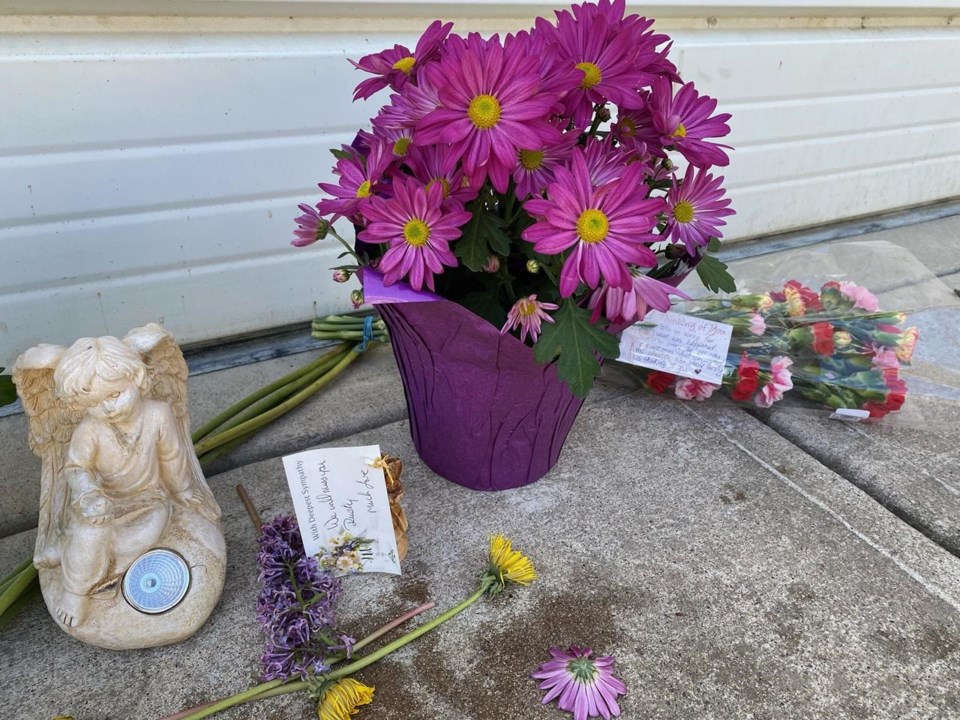CALGARY — An independent review into why it took an ambulance 30 minutes to get to an 86-year-old Calgary woman who was attacked by three dogs says staff shortages and communication issues contributed to the delay.
It said the consolidation of Alberta's emergency medical dispatch system did not slow the response, but the City of Calgary said communication would have been better had its 911 call takers and EMS dispatchers been in the same room.
Police and paramedics responded in June 2022 to the Capitol Hill neighbourhood and found the injured woman, Betty Ann Williams. She was taken to hospital by ambulance and later died.
"The fact is, Betty's death was a tragedy," said Dr. John Cowell, who was appointed as the official administrator of Alberta Health Services after the governing board was fired in October. "We are truly sorry.
"This was an uncommon emergency."
Alberta Health Services, which runs emergency medical services, asked for the review of the calls made to its dispatch centre, ambulance response time and availability of ambulances a few days after Williams' death.
The review by the Health Quality Council of Alberta determined what happened and when.
It confirmed that the initial 911 call was sent to the city's dispatch centre and assigned to police to determine whether the scene was safe. If it had been determined that the dogs were contained, the call could have been transferred to EMS to assess injuries.
The police call taker dispatched a bylaw officer to the scene and phoned EMS dispatch, which was short-staffed at the time, to request an ambulance. EMS classified the "dog bite" as non-life-threatening and put it on a pending list because no ambulances were available.
The review found that a bylaw officer at the scene tried to get an ambulance to come sooner but both that officer and the 911 call dispatcher couldn't get through to EMS.
Twenty-five minutes after the initial 911 call, it was reclassified as life-threatening and an ambulance was dispatched to the scene. Paramedics then went to the front door, not to the back alley where the attack happened. The patient got to the hospital almost an hour after a neighbour made that 911 call.
Charlene McBrien-Morrison, CEO of the Health Quality Council, said several factors led to the delay.
"People set out to do the right thing and yet there were times really when the emergency system around them and the tools available to those individuals let them down," she told reporters Thursday.Â
"That day there was no single action or activity that by itself slowed the ambulance response time. It was a confluence of many things that came together on that day."
The review identified five issues and made a total of 16 recommendations to AHS, the city and police to fix those problems.
The health authority said it's already working on several of those, including having 911 call takers work with EMS dispatch to co-evaluate medical calls, which is standard practice in other cities; enabling bylaw officers to interrupt radio traffic to get a quicker response; and, establishing a standard way to record location-specific information.
"We deeply apologize for the role that AHS had in the delay in getting an ambulance to the scene that day," said Mauro Chies, CEO of Alberta Health Services.Â
"Our commitment is to improving and ensuring that these same factors do not contribute to another tragedy."
The City of Calgary, which is also conducting its own investigation, supported the independent review and accepted its recommendations.
Glenda Sahlen, deputy chief of Calgary's 911 operations, said the consolidation of medical dispatch by the province added complexities to the system.
"Interoperability is critical in events requiring a multi-agency response and Calgary 911 sees that every day between the Calgary police service and the Calgary fire department," she said.Â
Sahlen said dispatchers from police, fire and EMS used to all work together in a room, which was a busy, intense environment.
"That does not mean that there's not an opportunity there to turn to your co-worker and say, 'This is bad, we need an ambulance there right away,'" she said.Â
"Every point where a call needs to leave our centre results in a challenge or a slowdown and we certainly saw that with this call."
Calgary Police said in a statement that the report made recommendations about using a protocol meant to streamline communication between emergency personnel in the field to dispatchers — something members were trained on in February 2021.Â
Police said they, too, are reviewing their emergency response.Â
This report by The Canadian Press was first published Jan. 19, 2023.
Colette Derworiz, The Canadian Press




